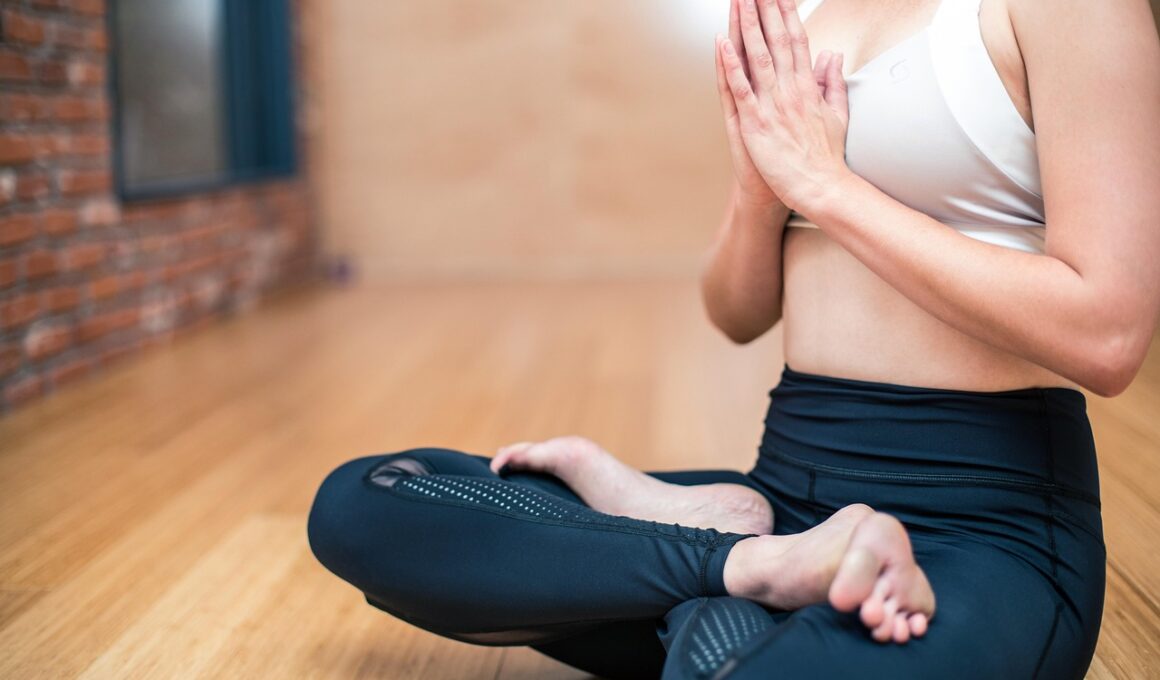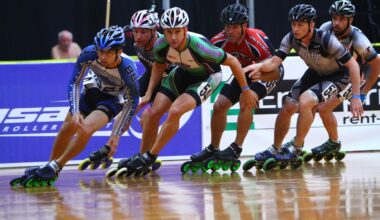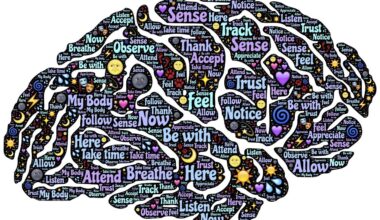Frequently Asked Questions by Yoga and Pilates Beginners
Yoga and Pilates can seem complex at first, particularly for beginners who may feel overwhelmed by the variety of poses, styles, and terminologies involved. Many students wonder how to get started and what they should focus on initially. The first thing to understand is that both practices emphasize breath control and core strength. These elements are essential for mastering postures and increasing flexibility. Beginners often benefit from attending classes led by qualified instructors, as they provide guidance tailored to individual needs. It’s important to ask questions during these classes and seek clarification whenever needed. Typical queries may include how to properly align the body in specific poses or which modifications to consider. Furthermore, setting realistic goals can help new practitioners stay motivated. Focus on simple objectives—increasing flexibility, improving core engagement, or consistently practicing a few times weekly. Adopting this mindset fosters progress, regardless of how quickly improvements are realized. Finally, a supportive mindset fosters enjoyment and satisfaction, making every session fulfilling regardless of experience or challenges faced.
Choosing the Right Class
Choosing the right class is crucial for beginners starting their yoga or Pilates journey. Look for classes labeled “beginner” or “foundational” as they are designed to accommodate new practitioners. An excellent place to begin is to attend a local studio or community center that offers introductory courses. Confirm the instructor’s qualifications, experience, and teaching style by checking their bio or conducting an online search. Many teachers let eager students ask questions beforehand. Additionally, you might find online resources like video tutorials or streaming classes useful as you explore styles. Popular options include Vinyasa, Hatha, and Yin Yoga for yoga, and Reformer or Mat classes for Pilates. Each of these styles has unique focuses, so experimenting with different classes helps identify what feels right for you. Don’t hesitate to share concerns or limitations with teachers, as they can provide modifications to enhance your experience. Engaging with the community can also create connections with like-minded individuals, providing motivation and support as you progress. Ultimately, choosing the right class is a significant factor in cultivating personal enjoyment and sustained practice.
One frequently posed question is about the required equipment for yoga and Pilates. Equipment varies between the two practices, with yoga primarily needing a quality yoga mat to provide grip and cushioning. Moreover, using blocks, straps, andbolsters may enhance comfort and assist with adjustments during poses. It’s wise to invest in these props as they make practice more accessible. For Pilates, especially in studio settings, you’ll encounter equipment like the reformer, which incorporates springs for resistance, enhancing workouts. However, beginners can start with mat-based Pilates, which requires little more than a mat and perhaps a small towel. As practitioners advance, many incorporate additional tools like resistance bands or stability balls, but starting simple often suffices. Additionally, selecting comfortable clothing aids in unrestricted movement. Stretchy, breathable fabrics ensure flexibility while learning poses. As you grow in practice, you might decide to explore a wider array of props and tools, embracing your evolving preferences. The key is to enjoy the journey, focusing less on equipment and more on the experience and growth associated with yoga and Pilates practice.
Understanding the Benefits
Understanding the benefits of yoga and Pilates is essential for new practitioners who may be considering which practice aligns best with their goals. Yoga is renowned for its ability to enhance flexibility, reduce stress, and promote mental clarity. Regular practice can also provide increased strength and balance, enabling individuals to perform daily activities more easily. On the other hand, Pilates focuses on core strength, improving overall posture and alignment. It targets the body’s deep stabilizing muscles, making it beneficial for rehabilitation and injury prevention. Both practices offer valuable benefits for body and mind. Many beginners find that combining elements from both yoga and Pilates allows for a well-rounded approach to fitness. Enhanced body awareness improves coordination and can lessen the risk of injury. Another benefit includes fostering a sense of community as you connect with instructors and fellow practitioners. Additionally, the meditative aspects of yoga can enhance mental focus, leading to improved productivity. By recognizing and harnessing these benefits, beginners can cultivate a continuous and fulfilling connection to their physical and mental well-being.
Beginners often wonder how frequently they should practice to see improvement. The general recommendation is to aim for at least two to three sessions weekly. Consistency is crucial in developing strength, flexibility, and memorizing poses. Striking a balance between practice and rest days is equally vital, allowing your body to recuperate and prevent burnout. However, individuals should pay attention to their own needs, adapting their schedules accordingly. For some, committing to shorter 20-30 minute sessions daily might yield faster progress than longer classes. Furthermore, incorporating additional elements, like home practice or online classes, provides flexibility in practice. Additionally, it’s beneficial to set aside time for mindfulness or breathwork outside of formal practice. Strengthening the breath enhances overall body awareness and leads to more satisfying results when engaging in poses. Incorporation of meditation tools like apps or guided audio tracks offers valuable resources. Assessing progress every month or so can help instructors adjust routines for optimal effectiveness. Tracking one’s journey through journaling enhances motivation and growth, providing inspiration to achieve further goals while emphasizing enjoyment of the process.
Navigating Challenges
Navigating challenges is another relatable concern for beginners stepping into yoga and Pilates practices. Initial sessions may present obstacles such as inflexibility, discomfort, or difficulty mastering poses. Acknowledging these challenges is essential, as they are common among novices. Instead of feeling discouraged, embrace the learning process, recognizing that improvement takes time and patience. Modify poses to suit your body’s capabilities, using props when needed to facilitate practice. finding alternatives is a common practice, allowing for enjoyment while still achieving positive outcomes. Many classes include integrated modifications, enabling students to advance at their pace. Furthermore, it’s advisable to approach practice with a sense of playfulness rather than perfectionism. This mindset helps alleviate performance pressure, giving room for exploration and growth. Connecting with a supportive community can also provide encouragement during times of struggle. Sharing experiences and tips with fellow practitioners fosters camaraderie, fostering a motivating environment. Remember, yoga and Pilates are personal journeys, unique to each individual. Everyone faces hurdles along the way, and overcoming them leads to more profound growth and satisfaction.
Finally, beginners often inquire about dietary recommendations to enhance their yoga and Pilates experience. While eating behaviors vary by individual, general guidelines promote overall well-being. A balanced diet full of fruits, vegetables, whole grains, and lean proteins provides essential nutrients to fuel practice. Maintaining hydration before, during, and after sessions is equally vital. Consuming a light snack an hour or two before class can help sustain energy levels without succumbing to heaviness in the stomach. Popular options include bananas, yogurt, or a handful of nuts. After practice, nourishing the body with proper recovery meals allows for muscle repair and aids in achieving fitness goals. Some practitioners may opt for specific diets like vegetarian or vegan, finding that these choices influence their physical sensations during practice. However, it’s essential to emphasize that nutrition is a personal preference and should align with tapering interests. Experimenting with various food options while noting how they impact sessions allows for informed choices that support physical practice. Ultimately, balancing diet and exercise creates the foundation for a healthy lifestyle that honors both yoga and Pilates endeavors.
Wrapping Up Your Yoga and Pilates Journey
Wrapping up your yoga and Pilates journey encourages reflectiveness on personal growth and experiences. With time, commitment, and patience, beginners evolve into practitioners capable of gracefully engaging in more advanced postures. It’s beneficial to recap progress and celebrate achievements, no matter how small. Each completed class signifies not only physical benefits but also personal dedication. Regular practice allows moments of mindfulness to blossom, revealing deeper connections between the body and mind. Consider documenting your journey through journals or social media platforms, allowing autobiographical reflections to inspire others. Setting new goals can invigorate your practice, pushing boundaries while fostering enthusiasm. Seeking community involvement, whether through support groups or fitness events, enables meaningful connections. Over time, you may wish to explore specialized workshops focusing on meditation or advanced poses as you deepen your practice. These experiences offer opportunities to build on already established foundations. Continuing education is crucial, as it can cultivate new insights and enhance personal expertise. As you grow in your journey, remember that every endeavor is unique and honor the journey itself.


